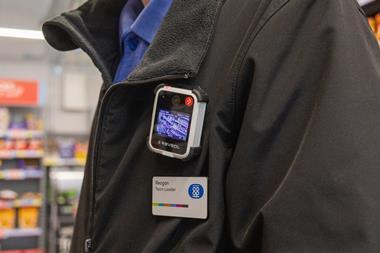The main reasons for this are that they can not find the product they want or it is too expensive. Many shoppers are not prepared to settle for an alternative if their favoured brand or product is not available.
Jams and preserves is a bit of a misleading name for this category, because it also contains savoury spreads, such as Marmite and peanut butter, and sweet spreads like Nutella. Overall it performs well and benefits retailers, suppliers and shoppers through the display.
There is a relatively low level of postponed purchase when compared to categories like frozen desserts.But the performance is not evenly spread. Our research showed retailers varied considerably, the best performer losing 20% of shoppers to postponed purchase, the worst 36%.
The category is frequently visited, with 59% of shoppers purchasing on a weekly or fortnightly basis. The vast majority (92%) of purchasers planned to buy and the decision-making and selection process was rapid.
The 8% who made impulse purchases did so because they passed the category and were reminded they liked a particular product. Responses included: "I like Nutella" or, in several cases, "Pancake Day".
A quarter of shoppers were browsers and the category did not convert them to a sale. A few made their own jam at home and visited to check prices and gloat about how much money they were saving. But more used the display as an aid to memory.
However, when looking at why others were attracted to the category, it looks as if it should have been possible to convert them to sale. This population of shoppers wanted something different, like ginger and rhubarb. They came to the category looking for ideas and left because there simply wasn't anything they fancied.
This is a range and mix issue and retailers and suppliers need to understand more about shoppers' tastes. While strawberry, blackcurrant and raspberry are guaranteed to sell, it could be the more unusual flavours that persuade these browsers to buy.
Among purchasers the category is evenly split between loyalists those loyal to a brand such as Marmite, Nutella and Robertsons, or shoppers with special needs such as diabetics and the pleasure seekers those shoppers who like to try different flavours and products.
Eight out of 10 people bought branded products while 21% of purchasers were motivated by low price or special offers. A promotion on Rowse honey enouraged shoppers to visit the category but many came with the expectation they would get a bargain and found the product too expensive.
The category was quite easy to shop and satisfaction levels were high. Improvements could be made to the ergonomics but this alone would not diminish the level of postponement.
The real answer is in improving the balance offered in the range and mix of products and brands and this can only be done by understanding shoppers' decision-making process.
{{INSIGHT }}
Jams and preserves is a bit of a misleading name for this category, because it also contains savoury spreads, such as Marmite and peanut butter, and sweet spreads like Nutella. Overall it performs well and benefits retailers, suppliers and shoppers through the display.
There is a relatively low level of postponed purchase when compared to categories like frozen desserts.But the performance is not evenly spread. Our research showed retailers varied considerably, the best performer losing 20% of shoppers to postponed purchase, the worst 36%.
The category is frequently visited, with 59% of shoppers purchasing on a weekly or fortnightly basis. The vast majority (92%) of purchasers planned to buy and the decision-making and selection process was rapid.
The 8% who made impulse purchases did so because they passed the category and were reminded they liked a particular product. Responses included: "I like Nutella" or, in several cases, "Pancake Day".
A quarter of shoppers were browsers and the category did not convert them to a sale. A few made their own jam at home and visited to check prices and gloat about how much money they were saving. But more used the display as an aid to memory.
However, when looking at why others were attracted to the category, it looks as if it should have been possible to convert them to sale. This population of shoppers wanted something different, like ginger and rhubarb. They came to the category looking for ideas and left because there simply wasn't anything they fancied.
This is a range and mix issue and retailers and suppliers need to understand more about shoppers' tastes. While strawberry, blackcurrant and raspberry are guaranteed to sell, it could be the more unusual flavours that persuade these browsers to buy.
Among purchasers the category is evenly split between loyalists those loyal to a brand such as Marmite, Nutella and Robertsons, or shoppers with special needs such as diabetics and the pleasure seekers those shoppers who like to try different flavours and products.
Eight out of 10 people bought branded products while 21% of purchasers were motivated by low price or special offers. A promotion on Rowse honey enouraged shoppers to visit the category but many came with the expectation they would get a bargain and found the product too expensive.
The category was quite easy to shop and satisfaction levels were high. Improvements could be made to the ergonomics but this alone would not diminish the level of postponement.
The real answer is in improving the balance offered in the range and mix of products and brands and this can only be done by understanding shoppers' decision-making process.
{{INSIGHT }}
















No comments yet